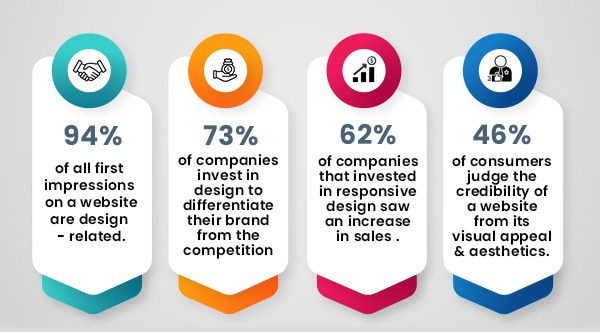Technical Web Developer Interview Questions (2024 Prep Guide)

The interview room awaits, heart pounding, palms sweating.
Feeling the heat after applying for that Web Development job?
Getting jitters as to what will the interviewer ask?
Relax!
You already came a long way, and with the right approach, you can ace those interviews and land your first web development job.
This section equips you with answers to common technical questions, designed to highlight your foundational knowledge, passion, and eagerness to learn. These are going to be sample answers, you can tweak the answers as per your experience level.
Remember, confidence, clear communication, and a genuine interest in the field go a long way!
HTML, CSS, JavaScript Interview Questions
Don't just rattle off definitions. Imagine explaining HTML, CSS, and JavaScript to a curious friend who's new to the web. Show your grasp of how these technologies work together to create dynamic and interactive websites. Use analogies or real-world examples to make it engaging!
1. Explain the difference between HTML, CSS, and JavaScript.
Imagine a website as a house.
-
HTML: This is the blueprint, forming the basic structure of the website with elements like headings, paragraphs, and images. Think of it as the walls and rooms of the house.
-
CSS: This is the decorator, adding style and visual elements to the website. It controls colors, fonts, layouts, and animations, making the house look appealing.
-
JavaScript: This is the electrician, bringing interactivity and dynamic behavior to the website. It allows users to click buttons, submit forms, and have a more engaging experience, just like having lights, switches, and appliances in the house.
2. What is the box model in CSS, and why is it important?
Start with a clear definition: "The box model represents how every HTML element is essentially a rectangular box consisting of margins, borders, padding, and content."
Then, move into its importance:
"Understanding the box model is crucial for designing layouts that behave consistently across different screen sizes and browsers. For example, when I was working on a responsive design project, I used the box model to ensure that all elements aligned perfectly across various devices by controlling their padding and margins."
3. How do you optimize a website for performance?
Website performance is critical for user experience and SEO. I optimize performance by minifying CSS and JavaScript files, compressing images, and using lazy loading for offscreen content. Additionally, I leverage browser caching and Content Delivery Networks (CDNs) to reduce load times. You can give an instance from your projects, like reducing the load time by 30% by implementing the techniques, which significantly improve user retention.
4. Can you explain event delegation in JavaScript?
Event delegation is a technique in JavaScript where a single event listener is added to a parent element instead of multiple event listeners to child elements. This is particularly efficient for handling events in dynamic content, where child elements are added or removed.
For example, I used event delegation in a dynamic list management app to manage click events efficiently, reducing the number of event listeners and improving overall performance.
Frontend Interview Questions
If you're aiming for a frontend role, you’ll need to demonstrate your ability to create visually appealing and user-friendly interfaces. Here’s how to answer some common questions with flair.
1. How do you ensure a website is accessible to all users?
Accessibility is about making sure everyone, including people with disabilities, can use a website. I use semantic HTML to give meaning to page elements and ARIA (Accessible Rich Internet Applications) roles to enhance screen reader navigation. I also ensure that all interactive elements are keyboard accessible.
For instance, in a project for a non-profit organization, I implemented accessibility features that improved the user experience for visually impaired users, leading to positive feedback and increased engagement.
2. What are the key considerations when designing a responsive website?
Responsive design is crucial in today's multi-device world. I always start with a mobile-first approach, ensuring that the design scales smoothly from smaller screens to larger ones. I use fluid grids, flexible images, and media queries to adapt the layout.
In a recent project, I developed a responsive e-commerce site where sales increased by 20% after optimizing the mobile experience."
3. How do you handle browser compatibility issues?
Browser compatibility is a common challenge. To handle browser compatibility issues, I:- Test Across Browsers: I check the site on various browsers like Chrome, Firefox, Safari, and Edge to spot inconsistencies.
- Write Standardized Code: I follow web standards to minimize issues.
- Use Progressive Enhancement: I ensure basic functionality works on all browsers, adding advanced features where supported.
- Apply Polyfills and Vendor Prefixes: I use these for features not natively supported.
- Utilize Debugging Tools: I rely on browser-specific tools for inspecting and fixing issues.
- Stay Updated: I keep up with browser changes to address new issues quickly.
- Act on Feedback:I quickly resolve user-reported issues to maintain a consistent experience.
Backend Interview Questions
For those interested in backend development, showcasing your understanding of server-side technologies and database management is key. Here’s how to ace those questions.
1. Can you explain the concept of RESTful APIs?
RESTful APIs allow communication between software systems using HTTP methods like GET, POST, PUT, and DELETE. Each resource is identified by a unique URL, and interactions are stateless, meaning each request is independent. They provide a uniform interface, enabling scalable, flexible, and consistent communication between clients and servers.
2. How do you secure a web application?
Security is paramount in web development. I secure applications by using input validation, parameterized queries to prevent SQL injection, and implementing HTTPS for secure data transmission.
Additionally, I use authentication and authorization techniques like JWT (JSON Web Tokens) and OAuth. In a previous role, I identified and patched a critical security vulnerability that could have led to a data breach, thereby protecting the company’s sensitive information.
3. How do you optimize a database query?
To optimize a database query, you can:
- Use proper indexing to speed up data retrieval.
- Avoid using SELECT *, and instead specify only the columns needed.
- Analyze and rewrite complex queries using subqueries or joins efficiently.
- Use database profiling tools to identify and optimize slow queries.
Full-stack Interview Questions
1. Describe the concept of responsive design and why it's important.
Responsive design ensures websites look good and function properly on all devices, from large desktops to tiny smartphones. It's crucial because:
-
Users access websites on various devices: people might browse on their phones during commutes, tablets on couches, and desktops at work. Responsive design caters to all these scenarios.
-
Search engines favor responsive websites: Google and other search engines prioritize websites that offer a good experience on all devices, boosting your website's visibility.
-
Improves user experience: A website that adapts to different screen sizes is easier to navigate and provides a better overall experience for users.
2. Imagine you're building a simple website. What are the key steps involved in the process?
Here's a simplified breakdown:
-
Planning: Define the website's purpose, target audience, and content.
-
Design: Sketch wireframes and choose a visually appealing layout.
-
Development: Build the website structure using HTML and style it with CSS.
-
Content creation: write engaging text, add images, and ensure accessibility.
-
Testing: Check for functionality across different devices and browsers.
-
Deployment: Launch the website and promote it to your target audience.
3. Explain the difference between GET and POST requests in HTTP.
Both are methods to send data from a client (browser) to a server, but they differ in purpose:
-
GET: Used for retrieving data from the server. Imagine ordering takeout (data) from a restaurant (server). The specific order (data) doesn't change the menu (server).
-
POST: Used for submitting data to the server. Think of booking a flight (data) on an airline's website (server). The data creates a new booking (change) on the server.
4. What are some common web browsers and how do they differ?
Popular browsers include Chrome, Firefox, Safari, Edge, and Opera. They share core functionalities but have some differences:
-
Rendering engines: Each browser uses its own engine to interpret and display websites, leading to slight variations in appearance.
-
Focus: Chrome emphasizes speed and features, Firefox promotes customization and privacy, Safari integrates seamlessly with Apple devices, and Edge focuses on Windows integration.
-
Compatibility: Developers test their websites across major browsers to ensure a consistent experience for most users.
4. Explain the concept of state management in web applications and discuss how it's implemented in frontend frameworks like React and backend frameworks like Django.
State management is the process of managing and maintaining the state of an application, including the data and UI state. In frontend frameworks like React, state management is often managed within components using useState or useContext hooks for local state or Redux for global state management.
In React, state is typically managed at the component level, allowing components to have their own state that can be passed down to child components as props.
In backend frameworks like Django, state management typically involves managing session states and user authentication. Django provides built-in session management functionality, allowing developers to store and retrieve session data for authenticated users.
Additionally, Django's authentication system provides tools for managing user authentication and authorization, including user authentication tokens and permissions.
{% module_block module "widget_e536c000-0c80-4843-8d02-735b577e9fbf" %}{% module_attribute "child_css" is_json="true" %}{% raw %}{}{% endraw %}{% end_module_attribute %}{% module_attribute "css" is_json="true" %}{% raw %}{}{% endraw %}{% end_module_attribute %}{% module_attribute "definition_id" is_json="true" %}{% raw %}null{% endraw %}{% end_module_attribute %}{% module_attribute "field_types" is_json="true" %}{% raw %}{"image_desktop":"image","image_link":"link","image_mobile":"image"}{% endraw %}{% end_module_attribute %}{% module_attribute "image_desktop" is_json="true" %}{% raw %}{"alt":"2-3","height":600,"loading":"lazy","max_height":500,"max_width":2000,"size_type":"auto_custom_max","src":"https://odinschool-20029733.hs-sites.com/hubfs/2-3.webp","width":2400}{% endraw %}{% end_module_attribute %}{% module_attribute "image_link" is_json="true" %}{% raw %}{"no_follow":false,"open_in_new_tab":true,"rel":"noopener","sponsored":false,"url":{"content_id":null,"href":"https://www.odinschool.com/software-engineering/react-web-development-course","href_with_scheme":"https://www.odinschool.com/software-engineering/react-web-development-course","type":"EXTERNAL"},"user_generated_content":false}{% endraw %}{% end_module_attribute %}{% module_attribute "image_mobile" is_json="true" %}{% raw %}{"alt":"Mobile-version-of-blog-ads-_2_-1","height":300,"loading":"lazy","max_height":300,"max_width":500,"size_type":"auto","src":"https://odinschool-20029733.hs-sites.com/hubfs/Mobile-version-of-blog-ads-_2_-1.webp","width":500}{% endraw %}{% end_module_attribute %}{% module_attribute "label" is_json="true" %}{% raw %}null{% endraw %}{% end_module_attribute %}{% module_attribute "module_id" is_json="true" %}{% raw %}132581904694{% endraw %}{% end_module_attribute %}{% module_attribute "path" is_json="true" %}{% raw %}"/OdinSchool_V3/modules/Blog/Blog Responsive Image"{% endraw %}{% end_module_attribute %}{% module_attribute "schema_version" is_json="true" %}{% raw %}2{% endraw %}{% end_module_attribute %}{% module_attribute "smart_objects" is_json="true" %}{% raw %}null{% endraw %}{% end_module_attribute %}{% module_attribute "smart_type" is_json="true" %}{% raw %}"NOT_SMART"{% endraw %}{% end_module_attribute %}{% module_attribute "tag" is_json="true" %}{% raw %}"module"{% endraw %}{% end_module_attribute %}{% module_attribute "type" is_json="true" %}{% raw %}"module"{% endraw %}{% end_module_attribute %}{% module_attribute "wrap_field_tag" is_json="true" %}{% raw %}"div"{% endraw %}{% end_module_attribute %}{% end_module_block %}
5. Describe the MVC (Model-View-Controller) architectural pattern and its role in both frontend and backend development. Provide examples of how MVC is implemented in frontend frameworks like Angular and backend frameworks like Express.js.
The MVC architectural pattern divides an application into three interconnected components: the Model, which represents the data and business logic, the View, which represents the UI and presentation logic, and the controller, which handles user input and updates the model and view accordingly. MVC promotes separation of concerns and modularity, making applications easier to maintain and scale.
In frontend frameworks like Angular, the MVC pattern is implemented using components, services, and routing. Components represent the View layer, services encapsulate the business logic and data access operations (model); and routing is used to handle navigation and controller logic. For example, in Angular, components define the UI and presentation logic, services manage data retrieval and manipulation, and routing defines the application's navigation structure.
In backend frameworks like Express.js, the MVC pattern is implemented using routes, controllers, and models. Routes define the URL endpoints and HTTP methods, controllers handle request processing and business logic, and models represent the data and database interactions. For example, in Express.js, routes define the API endpoints, controllers handle request processing and data manipulation, and models interact with the database to retrieve or update data.
6. How do you handle cross-origin requests (CORS) in web development, and what are the security implications? Provide examples of how CORS is configured in frontend frameworks like Vue.js and backend frameworks like Flask.
Cross-origin resource sharing (CORS) is a security feature implemented by web browsers to restrict cross-origin HTTP requests initiated from scripts. CORS allows servers to specify which origins are allowed to access their resources, helping to prevent cross-site request forgery (CSRF) attacks.
In frontend frameworks like Vue.js, CORS is configured by specifying the allowed origins in the server's response headers. For example, in a Vue.js application making requests to a Flask backend, the Flask server can enable CORS by adding the appropriate response headers using the Flask-CORS middleware:
from flask import Flask
from flask_cors import CORS
app = Flask(__name__)
CORS(app)
This allows the Vue.js application to make cross-origin requests to the Flask backend securely.
7. Explain the concept of asynchronous programming in web development and discuss how it's implemented in both frontend JavaScript and backend Node.js applications. Provide examples of asynchronous operations and how they're handled using callbacks, promises, and async/await.
Asynchronous programming is a programming paradigm that allows multiple operations to be performed concurrently, improving application performance and responsiveness. In web development, asynchronous programming is commonly used to handle I/O operations, such as fetching data from a server or reading from a file.
In frontend JavaScript, asynchronous operations are handled using callbacks, promises, or async/await syntax. For example, fetching data from a server using the Fetch API:
fetch('https://api.example.com/data')
.then(response => response.json())
.then(data => console.log(data))
.catch(error => console.error('Error fetching data:', error));
In backend Node.js applications, asynchronous operations are also handled using callbacks, promises, or async/await syntax. For example, reading from a file using the fs module:
const fs = require('fs');
fs.readFile('example.txt', 'utf8', (err, data) => {
if (err) {
console.error('Error reading file:', err);
return;
}
console.log('File content:', data);
});
Promises and async/await syntax provide a more readable and concise way to handle asynchronous operations, avoiding callback hell and improving code maintainability.
8. What are some common security vulnerabilities in web applications, and how do you mitigate them at both the frontend and backend layers? Provide examples of security best practices for preventing XSS (Cross-Site Scripting) attacks, SQL injection, and CSRF (Cross-Site Request Forgery) attacks.
Common security vulnerabilities in web applications include XSS (Cross-Site Scripting), SQL injection, and CSRF (Cross-Site Request Forgery) attacks. To mitigate these vulnerabilities, developers can implement security best practices at both the frontend and backend layers.
XSS (Cross-Site Scripting): To prevent XSS attacks, developers should sanitize user input and encode output to prevent malicious scripts from being executed. For example, in a frontend framework like React, developers can use libraries like DOMPurify to sanitize user input and prevent XSS attacks.
SQL injection: To prevent SQL injection attacks, developers should use parameterized queries or ORM frameworks to safely construct SQL queries. For example, in a backend framework like Express.js using the Sequelize ORM, developers can use parameterized queries to prevent SQL injection attacks:
const { Op } = require('sequelize');
const { User } = require('./models');
// Safe query using parameterized query
const users = await User.findAll({
where: {
username: {
[Op.eq]: req.body.username
}
}
});
CSRF (Cross-Site Request Forgery): To prevent CSRF attacks, developers should implement anti-CSRF tokens and validate requests on the server-side. For example, in a frontend framework like Angular, developers can generate anti-CSRF tokens and include them in forms:
<form [formGroup]="loginForm" (ngSubmit)="login()">
<input type="text" formControlName="username" />
<input type="password" formControlName="password" />
<input type="hidden" name="_csrf" value="{{ csrfToken }}" />
<button type="submit">Login</button>
</form>
And validate the token on the server-side:
const csrfToken = req.body._csrf;
if (!isValidCSRFToken(csrfToken)) {
return res.status(403).send('Invalid CSRF token');
}
By implementing these security best practices at both the frontend and backend layers, developers can significantly reduce the risk of security vulnerabilities in web applications.
Web Development Vs App Development: Which is a Better Career Choice?
9. What is the difference between client-side and server-side programming in web development?
Client-side programming refers to writing code that executes in the user's web browser. This includes languages like HTML, CSS, and JavaScript. Client-side code is responsible for rendering the user interface and handling user interactions without requiring communication with the server for every action.
On the other hand, server-side programming involves writing code that runs on the web server. This code handles requests from the client, processes data, interacts with databases, and generates dynamic content to be sent back to the client. Server-side languages like Node.js, Python, Ruby, and PHP are commonly used for server-side programming.
10. Explain the importance of responsive web design and how it's achieved in web development.
Responsive web design is crucial for ensuring a consistent user experience across different devices and screen sizes. With the proliferation of smartphones, tablets, and other devices, users expect websites to adapt and display properly regardless of the device they're using.
Responsive web design is achieved through techniques like fluid grids, flexible images, and media queries. Fluid grids allow elements on the page to resize proportionally based on the user's screen size. Flexible images ensure that images scale appropriately to fit different screen sizes without losing quality. Media queries allow developers to apply different styles based on the device's characteristics, such as screen width or orientation.
11. What are some common HTTP methods used in web development, and how are they used?
Common HTTP methods include GET, POST, PUT, DELETE, and PATCH.
-
GET: Used for retrieving data from a server. Typically used for fetching web pages or API endpoints.
-
POST: Used for submitting data to a server. Often used for form submissions or creating resources on the server.
-
PUT: Used for updating existing data on a server. Typically used for updating resources.
-
DELETE: Used for deleting data from a server. Often used for deleting resources.
-
PATCH: Used for partially updating existing data on a server. Similar to PUT but only updates specific fields.
12. What are some best practices for optimizing web page loading performance?
Optimizing web page loading performance is essential for providing a smooth user experience. Some best practices include:
-
Minimizing HTTP requests by combining files, using CSS sprites, and reducing script and stylesheet sizes.
-
Leveraging browser caching to reduce server load and improve loading times for returning visitors.
-
Using asynchronous loading for scripts and stylesheets to prevent blocking page rendering.
-
Optimizing images by using appropriate formats, compressing images, and specifying image dimensions.
-
Lazy loading content, such as images or videos, to defer loading until they're needed.
13. How do you ensure the security of web applications against common vulnerabilities like XSS (Cross-Site Scripting), SQL injection, and CSRF (cross-site Request Forgery) attacks?
Ensuring the security of web applications involves implementing various measures to mitigate common vulnerabilities:
-
Preventing XSS attacks by sanitizing user input, encoding output, and implementing Content Security Policy (CSP) headers to restrict the sources of executable scripts.
-
Preventing SQL injection attacks by using parameterized queries, ORM frameworks, or input validation to sanitize user input before executing SQL queries.
-
Preventing CSRF attacks by implementing anti-CSRF tokens, validating requests on the server-side, and using same-site cookies to prevent cross-site request forgery.
-
Implementing proper authentication and authorization mechanisms, including strong password policies, multi-factor authentication, and role-based access control (RBAC), to prevent unauthorized access to sensitive data and resources.
Jitendra Kumar Pandit's remarkable journey from a humble village in Jharkhand to achieving great success as a Java developer at the PeopleTech company and a significant salary increase is nothing short of awe-inspiring.
14. How do you ensure your web application is secure?
Ensuring web application security involves several practices:
-
Implementing HTTPS to encrypt data in transit.
-
Validating and sanitizing input to prevent SQL injection, XSS attacks, and other injection flaws.
-
Using secure cookies and tokens for sessions, implementing proper authentication and authorization checks.
-
Regularly updating dependencies to mitigate vulnerabilities.
-
Conducting security audits and penetration testing to identify and address security weaknesses.
15. Explain the difference between server-side rendering (SSR) and client-side rendering (CSR). How do they impact SEO and performance?
SSR involves rendering a web page on the server and sending the fully rendered HTML to the client. This approach improves SEO, as search engines can crawl the content more effectively. It also provides a faster First Contentful Paint (FCP), enhancing the perceived performance. However, SSR can increase server load and initial page load time due to the rendering process on the server.
CSR renders web pages in the browser using Java


